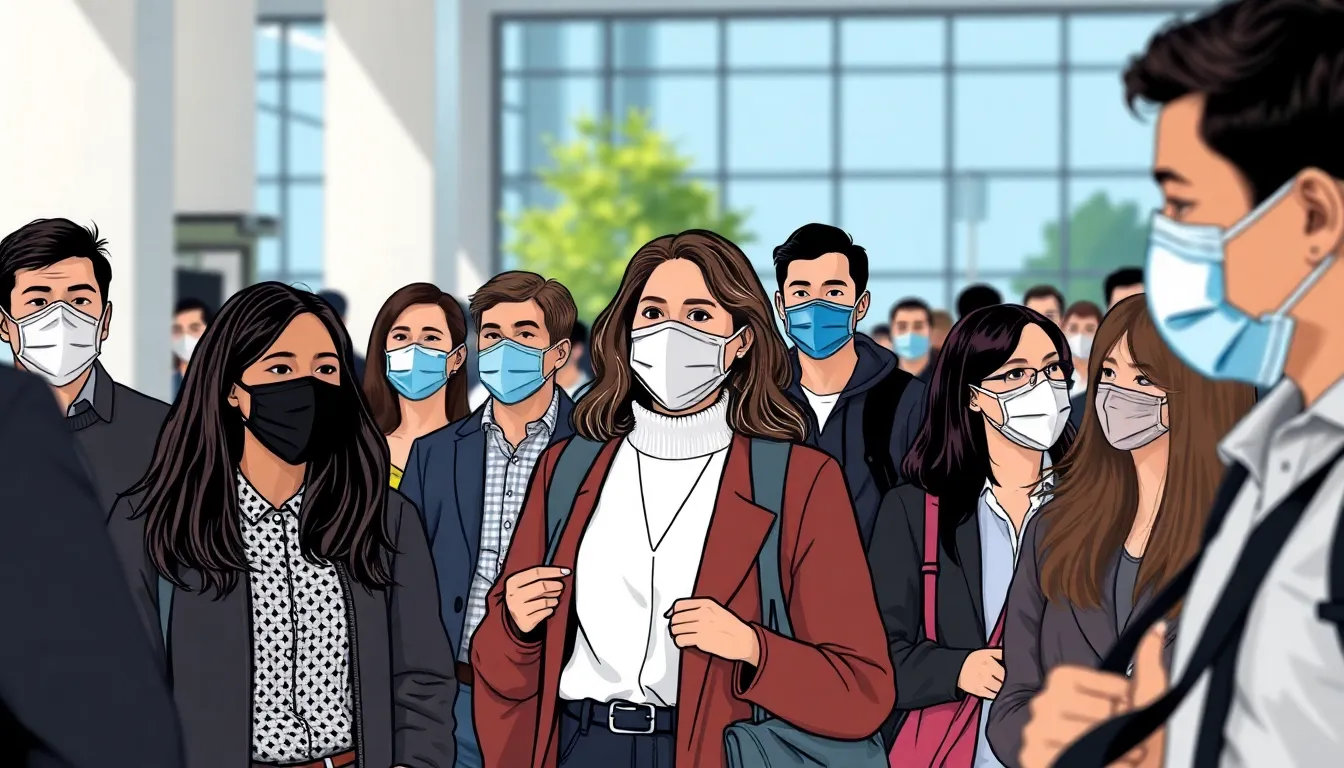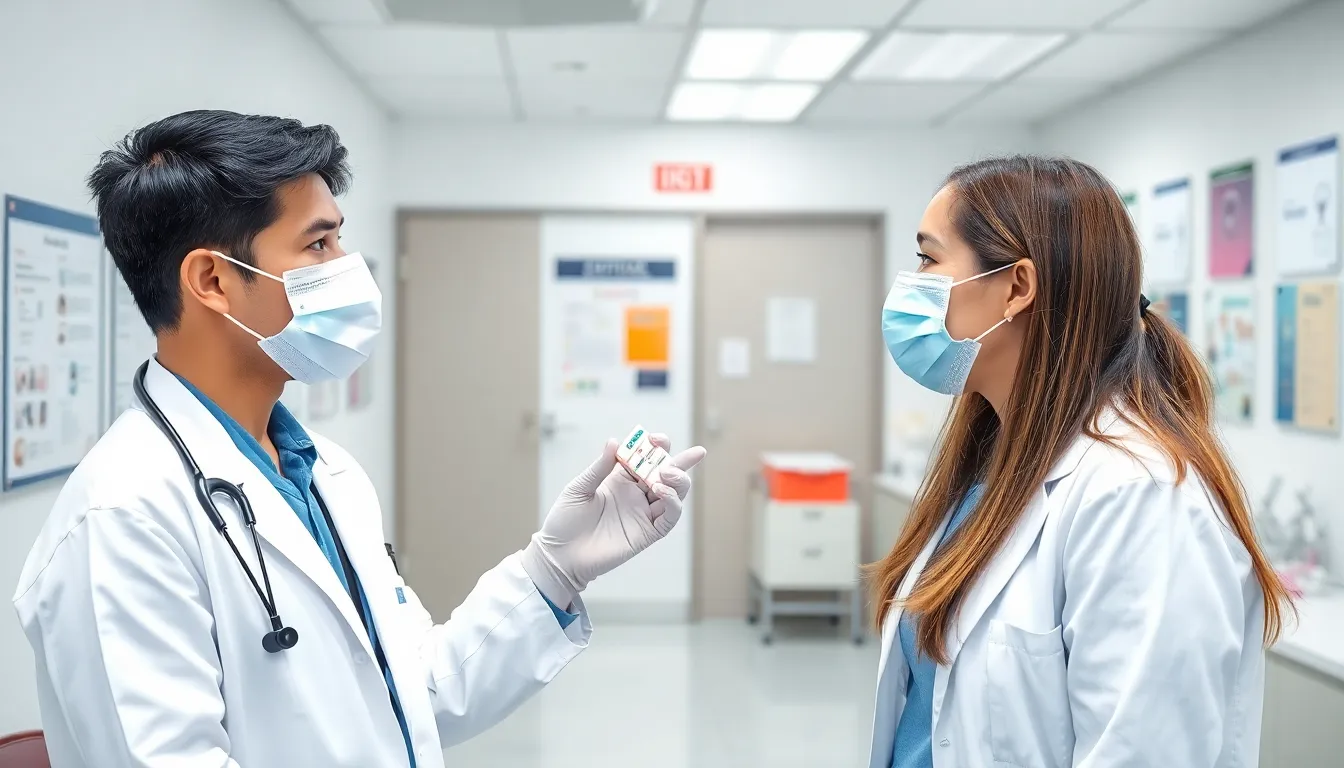COVID-19 has turned into that uninvited guest who just won’t leave the party. But what if there’s a way to kick it out for good? Understanding when COVID isn’t contagious can help everyone breathe a little easier—literally. Imagine being able to hug your grandma or share a pizza with friends without fear. Sounds dreamy, right?
Table of Contents
ToggleUnderstanding COVID-19 Contagion
Determining when COVID-19 is no longer contagious is crucial for public health. It helps individuals navigate social interactions while minimizing the risk of transmission.
What It Means to Be Contagious
Being contagious refers to the ability of an infected person to spread a virus to others. In the case of COVID-19, contagiousness typically starts one to two days before symptoms appear. Individuals remain contagious for several days after symptom onset. The Centers for Disease Control and Prevention (CDC) recommends isolating for at least 10 days from symptom onset for most cases. Testing negative after this period can indicate a lower risk of transmission.
How COVID-19 Spreads
COVID-19 spreads primarily through respiratory droplets released when an infected person talks, coughs, or sneezes. Close contact with an infected person increases the likelihood of transmission. Touching contaminated surfaces and then touching the face can also lead to infection. Aerosol particles can linger in poorly ventilated areas, posing additional risk. Preventive measures include wearing masks, practicing good hand hygiene, and maintaining physical distance.
Timeline of Contagiousness

Understanding the timeline of contagiousness for COVID-19 is crucial for managing risks effectively. This section breaks down the key phases of infection and transmissibility.
Initial Infection Period
Contagiousness typically begins 1 to 2 days before symptoms appear. During this period, an individual may unknowingly spread the virus through respiratory droplets. Symptoms often manifest 2 to 14 days after exposure to the virus. Individuals can remain asymptomatic yet still facilitate transmission. Therefore, vigilance during this time is vital to prevent further spread.
Duration of Contagiousness
The contagious phase lasts for at least 10 days post-symptom onset, as recommended by the CDC. Several factors influence this duration, including the severity of symptoms and the presence of underlying health conditions. A negative COVID-19 test can indicate a reduced risk of transmission. Individuals with more severe symptoms may remain contagious longer, necessitating careful observation. Therefore, adherence to guidelines helps mitigate the risk of spreading COVID-19 in communities.
Factors Influencing Contagiousness
Understanding factors that influence contagiousness helps determine when COVID-19 is no longer a risk to others. Key elements include whether a person is symptomatic or asymptomatic, as well as their vaccination status.
Asymptomatic vs. Symptomatic Cases
Symptomatic individuals typically spread the virus more readily due to higher viral loads. A person showing symptoms like cough or fever poses a greater risk to others. In contrast, asymptomatic carriers can still transmit the virus but often do so at lower levels. Contagiousness begins one to two days before symptoms appear, lasting for about 10 days after they start. Monitoring symptoms becomes essential as this helps estimate the duration of contagiousness.
Vaccination Status
Vaccination plays a crucial role in reducing the transmission of COVID-19. Fully vaccinated individuals generally exhibit lower viral loads, decreasing the likelihood of spreading the virus. Breakthrough infections in vaccinated people often result in milder cases, further minimizing contagion risk. Though vaccinated individuals can still contract and transmit the virus, their contagiousness duration may be shorter than that of unvaccinated individuals. Remaining updated on vaccination status and booster recommendations enhances overall community safety.
Testing and Diagnosis
Testing plays a vital role in determining COVID-19 contagiousness. Accurate diagnosis can guide isolation practices and personal interactions.
PCR vs. Antigen Tests
PCR tests provide highly accurate results, detecting viral genetic material in the sample. These tests typically take longer for results, often returning within 24 to 48 hours. Antigen tests, on the other hand, offer quicker results, usually within 15 to 30 minutes, by identifying specific proteins from the virus. While antigen tests are less sensitive than PCR tests, they can effectively determine contagiousness especially during active infection. Individuals experiencing symptoms should prioritize PCR testing for conclusive results, while antigen tests may suffice for rapid screening in specific scenarios.
When to Test for Contagiousness
Testing for contagiousness should happen at strategic times. Individuals displaying symptoms should test as soon as possible. Testing within 5 to 7 days post-exposure can help identify potential infections. If symptoms develop, testing again after 24 to 48 hours after the initial test provides a clearer picture of viral load and contagiousness. Those who test positive must isolate for at least 10 days from symptom onset or the positive result date. Following these guidelines supports informed decisions around social interactions and minimizes transmission risks.
Managing Risk of Transmission
Understanding the measures for reducing COVID-19 transmission plays a vital role in safeguarding public health. Individuals can take specific steps to manage their risk effectively.
Isolation Guidelines
Health authorities recommend isolating for at least 10 days from symptom onset. This timeframe helps reduce the likelihood of spreading the virus to others. If fever and other symptoms have improved after this period, a negative test can further indicate a lower risk of contagiousness. Those with severe illness or compromised immune systems might require longer isolation. Reassessing symptoms regularly also aids in determining when it’s safe to resume regular activities.
Precautions After Infection
Preventing further transmission requires vigilance even after recovering from COVID-19. Wearing masks in crowded or indoor settings remains advisable, especially around vulnerable populations. Regular hand hygiene, such as washing hands or using hand sanitizer, helps maintain protection. Additionally, monitoring one’s health for any new symptoms is crucial. Individuals should stay informed about vaccination updates and booster shots to ensure ongoing immunity, ultimately contributing to community safety.
Understanding when COVID-19 is no longer contagious is essential for safely resuming social interactions. By adhering to guidelines from health authorities and monitoring symptoms diligently, individuals can reduce the risk of transmission. Testing plays a significant role in this process, providing clarity on contagiousness and supporting informed decisions.
Staying updated on vaccination status and following recommended isolation periods are crucial steps in protecting oneself and others. Ultimately, a collective effort in practicing safety measures will contribute to a healthier community and help navigate the ongoing challenges posed by the virus.



